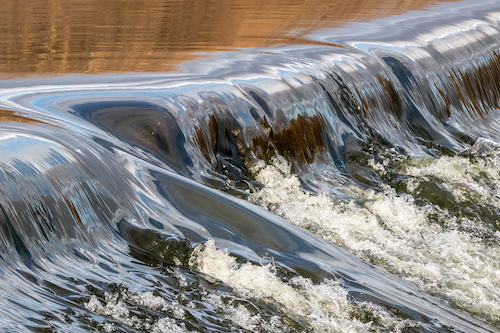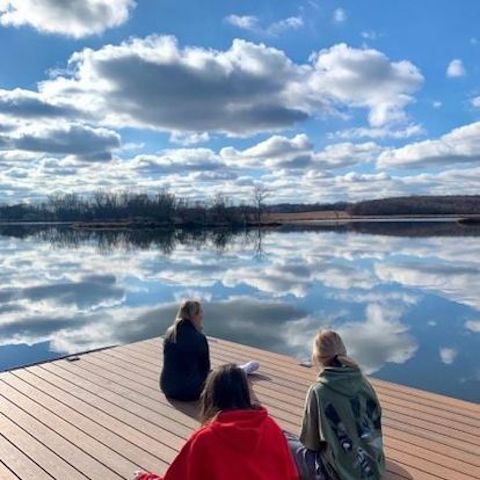Alternative Facts
We are in an era of emotional opinions about controversial issues that are often fueled by fear and misinformation. It is important to base our opinions upon reality. So where do we go to gather creditable information? One reliable source can be from historical records. Another can be through analyzing scientifically-generated data. In the case of the Fox River, we have a rich amount of both.
History Exhibit
The Elgin History Museum last week opened its latest exhibit, Elgin’s Fox River: An Environmental History. Through quotes and photos, the exhibit explores how people’s use of the river has changed since 1835. One quote in particular, from one of Elgin’s founders, James T. Gifford is important to note. In an 1835 letter to his wife, Gifford wrote, “I have on my claim the best place for water power which I have found on the river from its source to some distance below this … The Fox is the finest stream I ever saw, it has uniformly in this State a limestone bottom, its current uniform and gentle, its waters pure, and is abundantly supplied with fine Fish.” This observation is an important part of the story.
Outhouses and Dams
European settlers found what Native Americans had enjoyed for centuries: a resource-rich, exceptional river, The difference was that settlement meant permanent structures. A photo in the exhibit shows many piers into the river and each one had an outhouse on it. In 80 years, people’s use of the river had turned it into a sewer and no longer safe for human (or livestock) consumption. Elgin, like most communities along the Fox River, was founded where the residents could harvest the river’s energy to power machinery. Dam construction rapidly occurred in nearly every riverfront town. The river resource brought people and commerce to further build out those places into the villages, towns, and cities that are here today. That too is an important part of the story.
Polluted Fox
Many residents along the Fox River can tell their own pre-1960 history of untreated industrial waste pouring out of pipes into the river, the absence of game fish, fish loaded with open sores, and raw sewage floating on the surface. There was good reason to avoid swimming in the river and eating its fish. That is factual history, but not the end of the Fox River story.
Environmental Movement
Those conditions were also found nationally, which initiated an environmental movement in the early 1970’s. A suite of environmental protection legislation, including the creation of the Environmental Protection Agency and the Clean Water Act turned our direction from degrading the water to the restoration of the once magnificent Fox River. Federal funding, standards, regulations, and enforcement brought about significant improvement. Threats were successfully addressed, but the continued impact of human expansion in the watershed brought about new threats. The successes are a key part of the story.
Improving Fox
Here we are 50 years later. Water quality and fish diversity have enjoyed slow but steady improvement. Municipalities have turned from dumping into the river, to facing the river to enjoy its aesthetic and economic value. However, the work is not done. Friends of the Fox River (FOTFR) was founded over 30 years ago to advocate for the Fox River through preservation, restoration, and protection. FOTFR builds its watershed of caretakers (called Friends) through education. The next chapter in the Fox River’s story is about to be written.
Dam Decision
FOTFR worked with the Elgin History Museum staff to develop Elgin’s Fox River exhibit. Visitors have the opportunity to vote to “Leave” the Elgin dam or “Remove” it. Reasons to remove the dam for the purpose of river restoration are listed in the exhibit and have scientific evidence as support. All the reasons listed on the exhibit to leave it are very common to hear, but none are scientifically accurate and lack empirical evidence for support. An important part of the Fox River story is that the constructed dams no longer function for their original purpose of providing power and they currently are the largest single obstacle for continued river restoration. To tell this part of the Fox River story, we rely on a history of dam removals and the scientific data associated with the far-reaching ecological benefits.
Restoration Revenue
FOTFR is currently telling this story with a series of “Dam Nite Out” experiences, and small group presentations. The intent is to address fears and misinformation with history and science as the information sources. FOTFR has been successful in converting resistance to excitement. This is important now as the Army Corps of Engineers is completing a multi-year study, the River Connectivity (dam removal) Ecosystem Restoration Feasibility study. Federal funds will be available for dam removals, along with possible local fund matches from the Illinois Department of Natural Resources. It is important to educate the public and support local decision makers as they prepare to address their plans for dam removals and the further restoration of our Fox River.
This next episode of the Fox River story will be some history of which we really can be proud.
Scientific Support
For additional information on river restoration, visit FOTFR’s Dam Questions page
or the Fox River Study Group’s River Restoration page https://www.foxriverstudygroup.org/river-restoration
.
Still have questions? Send them to Daminfo@FOTFR.org







